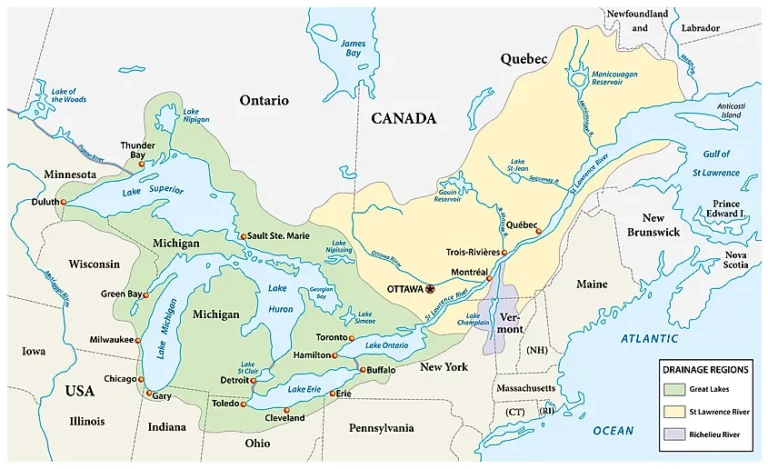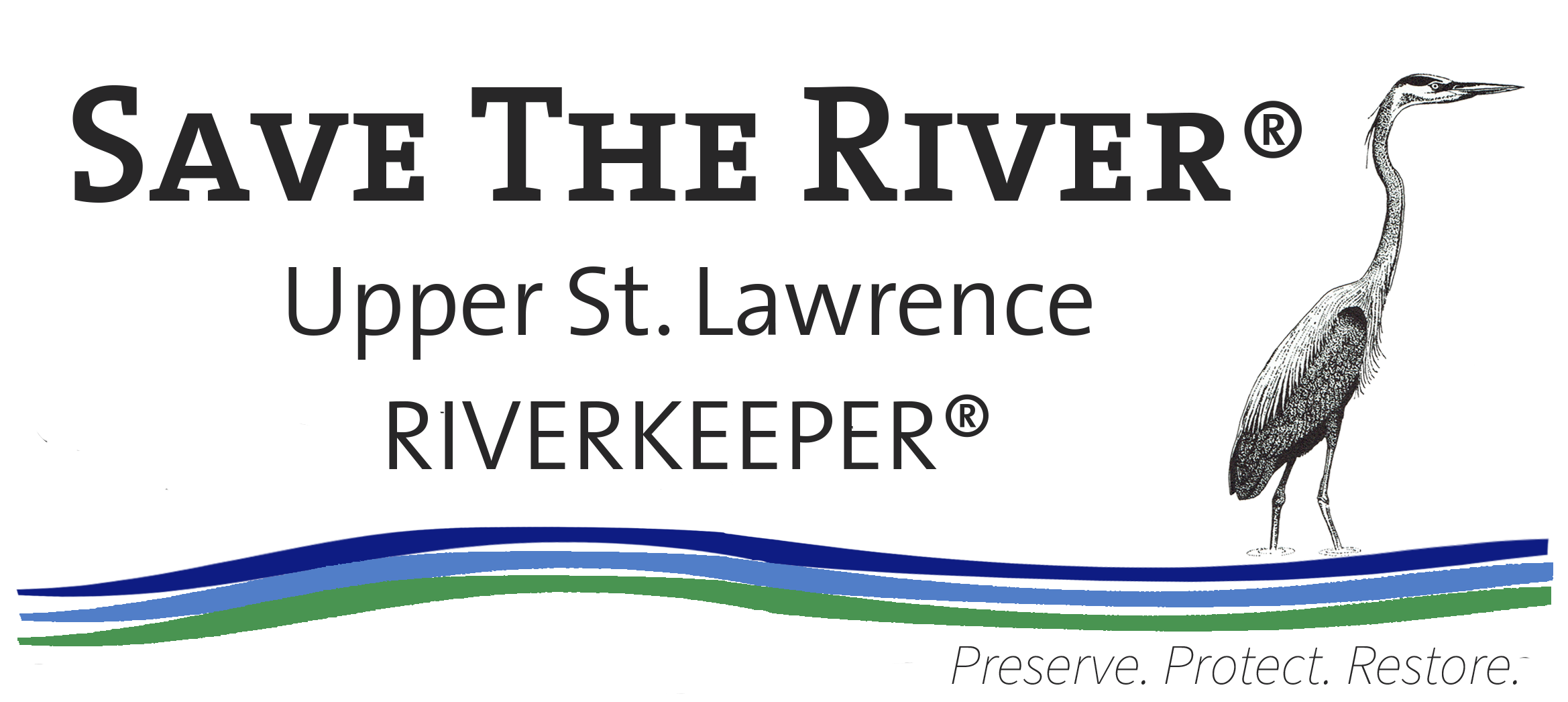Linking the Great Lakes to the Atlantic
The St. Lawrence River is one of the largest rivers in North America. It links the Great Lakes to the Atlantic Ocean. The Great Lakes hold nearly 20% of the world’s freshwater – covering approximately 94,000 square miles altogether.
As the natural outflow of the Great Lakes, the health of the St. Lawrence is directly tied to the health of one of the world’s greatest freshwater ecosystems.

Thousand Islands
Flowing over ancient glaciated rock, the Upper St. Lawrence River has formed a unique island paradise known as the Thousand Islands. The Thousand Islands consist of 1,864 islands. To be considered an island, the piece of land must be surrounded by water, above water all year long, and support at least one tree.
St. Lawrence River Wildlife
The St. Lawrence River valley is teeming with wildlife throughout the year.
The River is home to several species of concern including threatened and endangered species such as Common Terns, Blanding’s turtle, bald eagles, osprey, black tern, and the Indiana bat.
Numerous north woods mammal species find their home on the shores and islands of the River. This includes muskrats, beavers, flying squirrels, minks, and many others. Winter ice cover on the River provides important passage for animals between the shoreline and the islands.
Known as one of the great freshwater sport fishing grounds in the northeast, anglers travel from around the country to fish for pike, bass (particularly smallmouth bass), and muskellunge on the St. Lawrence River. Visit our Catch & Release pages for additional information on bass and muskellunge fishing.
The St. Lawrence River Valley is a key part of the Atlantic Migratory Fly-Way. This is otherwise known as the main pathway for seasonal migration of many bird species. The region has also been listed as an Important Bird Area by Audubon New York.
Bald eagles, which have not been seen on the River for many years. However, they are making a comeback and can be seen frequently in the winter. Visit our bald eagle page to for additional information.
Wetlands
The St. Lawrence River is also home to extensive coastal wetlands. These wetlands provide filtration for runoff, flood retention, and provide wildlife with food and shelter. Wetlands furthermore act as a nursery for the species of the River including waterfowl, numerous fish species as well as amphibians and reptiles.
For more information about the St. Lawrence River's Ecosystem:
- Frontenac Arch Biosphere Reserve – The Canadian portion of the Thousand Islands region is designated a United Nations Biosphere Reserve in recognition of the area’s globally unique ecosystem.
- The Algonquin to Adirondack Collaborative – Learn about the critical wildlife corridor that connects Ontario, Canada to the Adirondack mountains via the St. Lawrence River valley.
- Thousand Islands Land Trust – The Thousand Islands Land Trust is a not-for-profit land trust dedicated to the conservation and enhancement of the scenic, recreational, natural and historic character of the Thousand Islands Region.
- Great Lakes Commission – The Great Lakes Information Network, commonly known as GLIN, was originally developed by the Great Lakes Commission to serve as a regional information hub — a single place for people to find information relating to the binational Great Lakes – St. Lawrence region of North America.
